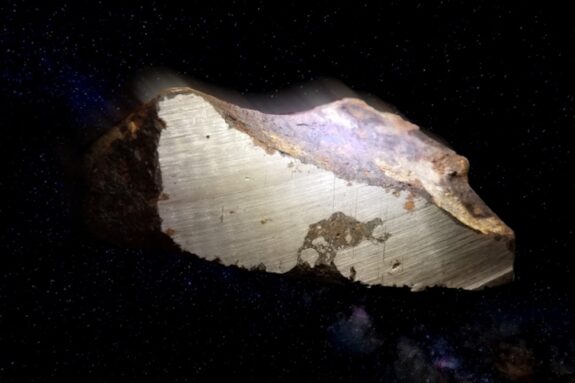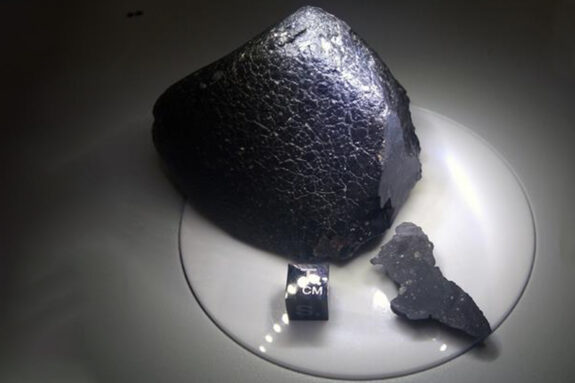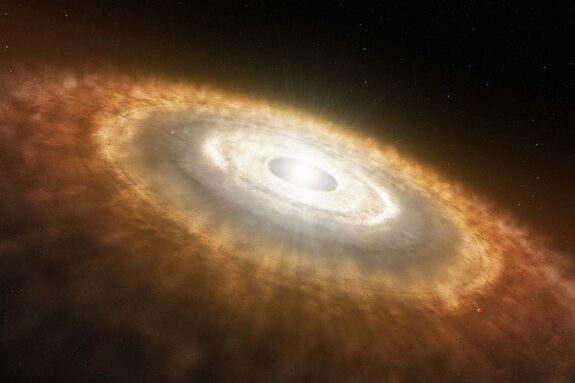Space y Chile: communicating planetary science

Clara Maurel PhD '21 is featured in episode 1, "Tiny Pieces of Sky", on Michael Marsset's YouTube channel, Space y Chile. Photo Credit: Michael Marsset
While working as a postdoctoral associate at MIT’s Department of Earth, Atmospheric and Planetary Science (EAPS), Michael Marsset had many interesting conversations with his fellow scientists about the universe; Marsset then wondered if there was a way he could share those conversations with the public to enjoy as well.
“I wanted to share my passion for space sciences with people,” says Marsset. When he started to talk to those around him, it turned out they shared that interest too. “I started contacting colleagues asking for interviews. Most of them turned out to be very enthusiastic about the idea, which further motivated me.”
The result is Space y Chile, a YouTube series inspired by Marsset’s time in the EAPS planetary spectroscopy group with Francesca DeMeo and Richard Binzel. The series explores topics such as meteorites, exoplanets, and the human brain in zero gravity. The name of the channel, which translates to “Space and Chile”, is also a play on “spicy chili”, which gave Marsset a “good excuse for a silly logo.” But it also has the unifying theme of narrowing down such a broad topic to research projects being done in Chile.

“When I launched my channel, I had just learned that I would soon relocate to Chile (South America), having obtained a fellowship to work as an astronomer at the European Southern Observatory (ESO) and Paranal Observatory. So, from the beginning I knew that I would make videos about the scientific projects conducted in Chile,” says Marsset, who moved there in November 2021.
Chile has long been a paradise for astronomy research: clear skies, ideal atmospheric conditions, and low light pollution are perfect for radio and optical telescopes, such as the ESO’s Very Large Telescope and the Atacama Large Millimeter/submillimeter Array.
One of Marsset’s colleagues and good friends, Clara Maurel, knew appearing on the channel made perfect sense. Maurel obtained her PhD in planetary sciences in 2021 from EAPS. She is currently doing research as a Marie Sklodowska-Curie postdoctoral fellowship in France, studying the magnetic properties of meteorites to better understand the building blocks of planets, called planetesimals. She appears on the first episode of the channel, “Tiny Pieces of Sky”, to talk about her trip to the Atacama Desert in Chile to collect meteorite fragments.
“It was Michael’s first interview, so we were testing a few things, but I can tell you that now he’s a real professional,” says Maurel. The process was fun and went so smoothly, Maurel confided, that she didn’t even experience any nerves about appearing on camera.
Marsset wants the interviews to be captivating and inspiring, and has the help of another friend, Sergio Valenzuela, a musician who created a music library just for the channel, to help set the tone. The biggest learning experience for Marsset in starting the channel has been budgeting the time necessary to create the videos from start to finish.
“Making outreach videos takes A LOT of time,” he explains. “It implies preparing the interviews, which involves some scientific reading, [and then] recording and editing the videos. I also usually cook lunch or dinner for my guests.” He’s learned to take his time without focusing on how long it takes to get the video published.
For Maurel, the process was worth it. She enjoys talking about her research with a general audience because it gives her the opportunity to take a break from the specialization that comes with research.
“Outreach talks also help me take a step back and remember why I like doing what I do,” she says. “We can take a break and speak about the big questions, big challenges, or simply big facts.”
It also provides an excuse to pull out her meteorite samples, which are billions of years old. Experiences like this make an impression on the audience and is one of the reasons Maurel recommends that any scientist who has the opportunity to do science communications should.
“People like it!” says Maurel. “It makes you realize that a lot of people think what you’re doing is fascinating.” She also says that since a lot of science is funded through government money, it’s important for scientists to explain to the general population what they’re doing with those contributions.
Since Maurel’s appearance on the first episode, three more episodes of Space y Chile have come out—including one with former EAPS 51 Pegasi b Fellow Clara Sousa-Silva—and Marsset has big plans for the future of the channel: in addition to interviewing his new colleagues at the ESO, he’d also like to try some new video formats, such as virtual visits to the ESO observatories and facilities.
For now, though, he still has six more interviews to add to the channel, interviewing researchers mostly from MIT and Harvard. As for EAPS researchers, he says to expect some postdocs, and even a professor, to make an appearance.


